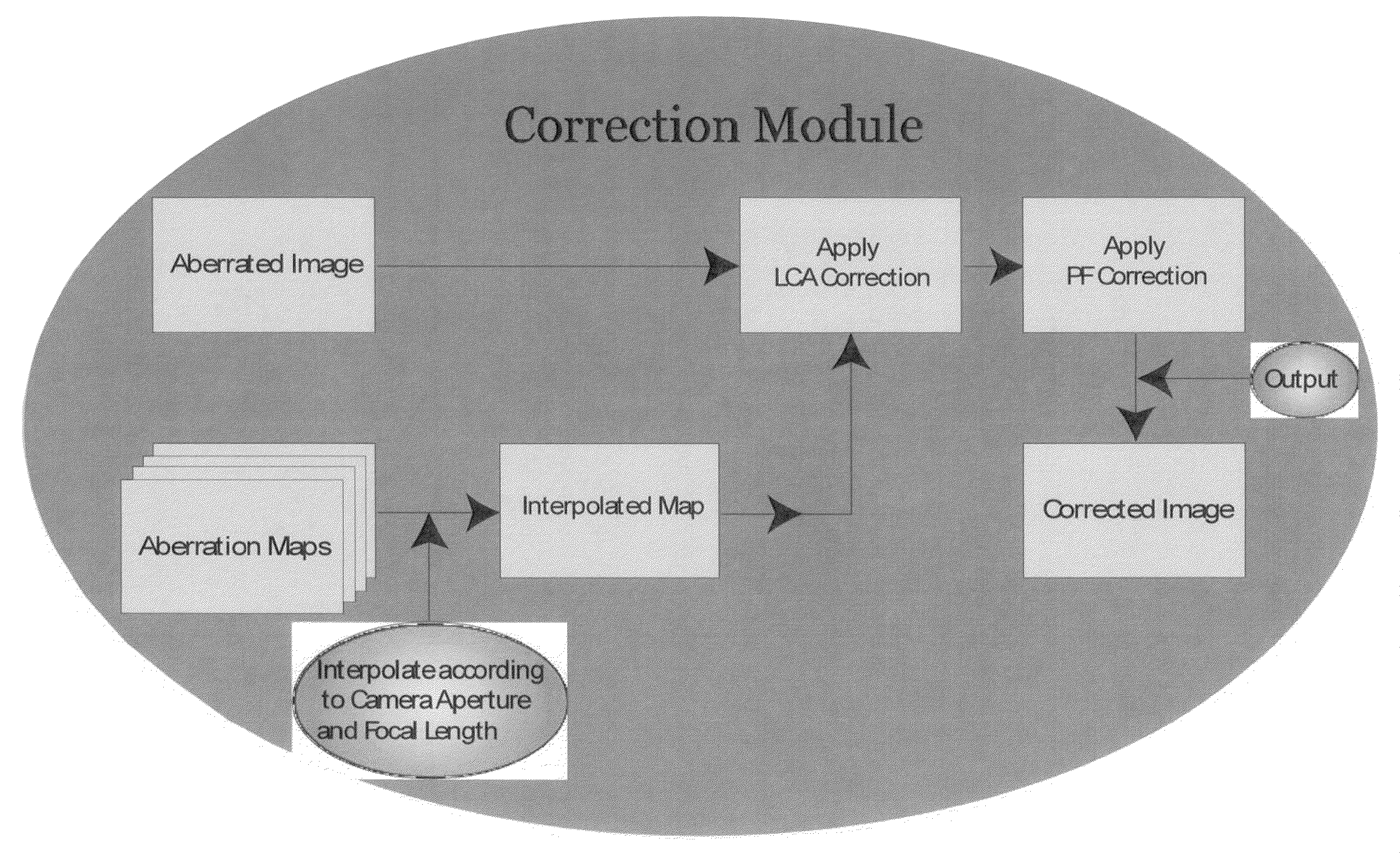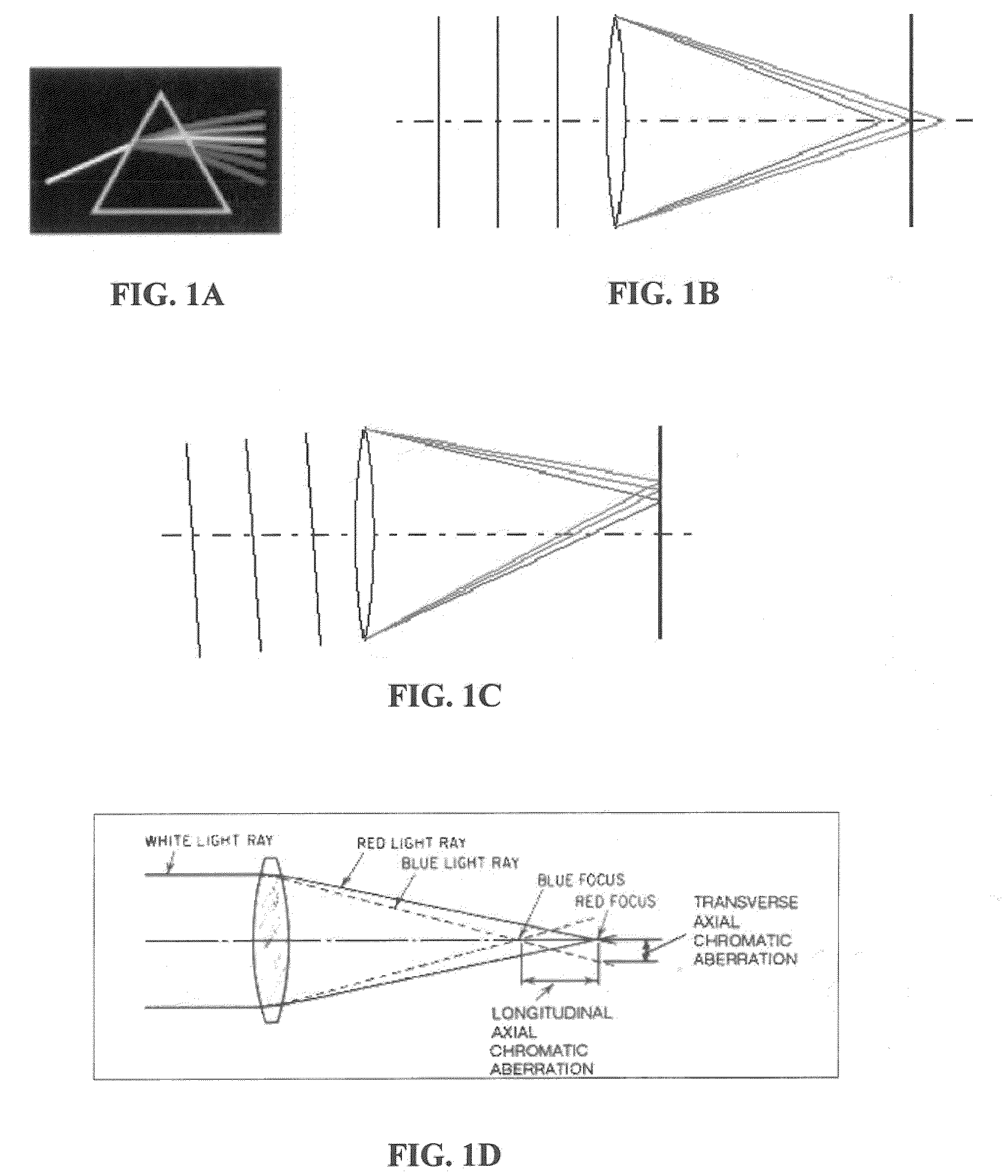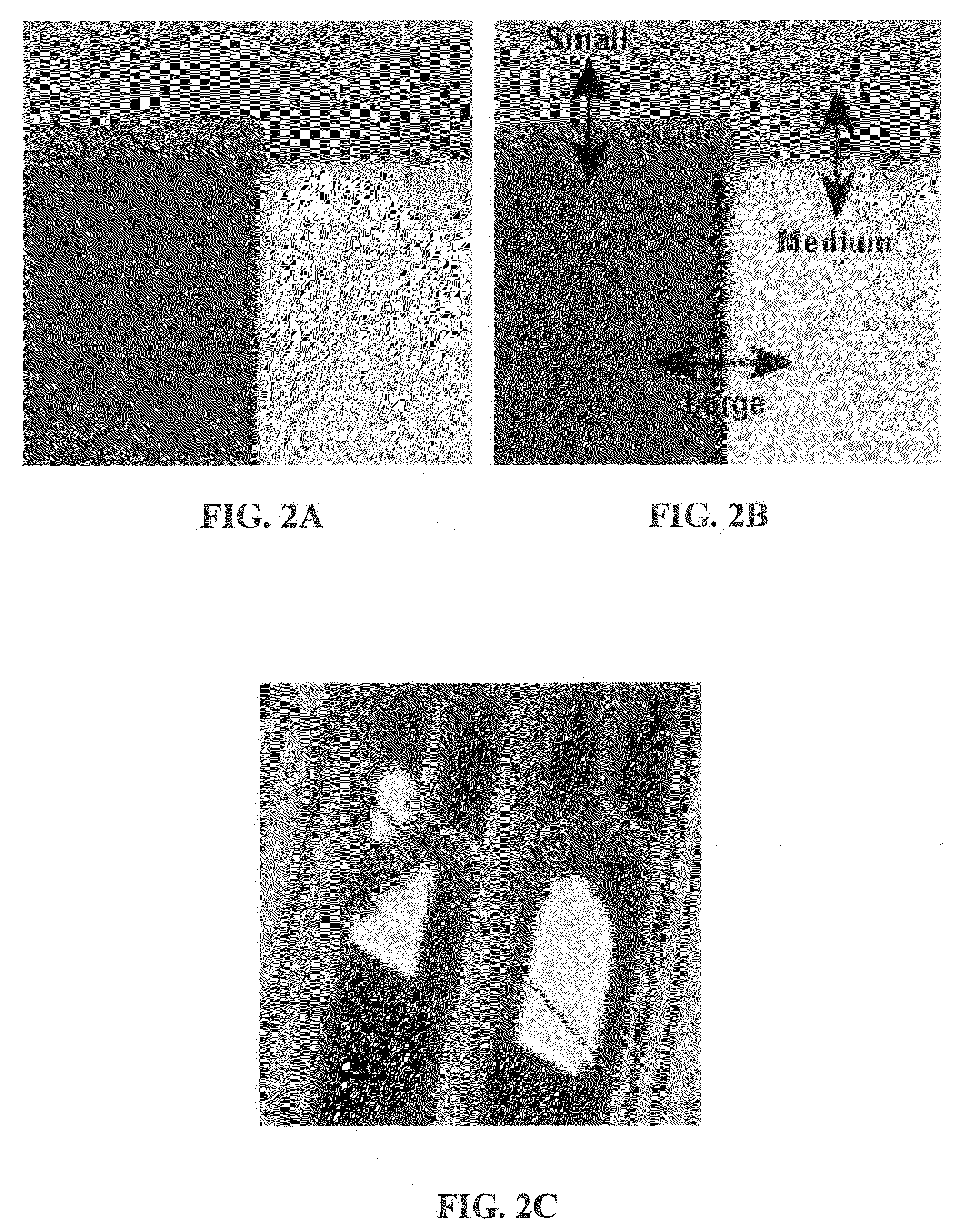Methods and Apparatuses for Addressing Chromatic Abberations and Purple Fringing
- Summary
- Abstract
- Description
- Claims
- Application Information
AI Technical Summary
Benefits of technology
Problems solved by technology
Method used
Image
Examples
Embodiment Construction
of SEVERAL EMBODIMENTS
[0045]Systems and methods for detecting and correcting chromatic aberrations including fringing (e.g., purple fringing) are described.
[0046]In certain embodiments, chromatic aberration is addressed by separating an image into color planes and then adjusting these to reduce chromatic aberration by using a specific calibration image (calibration chart) as an empirical method to calibrate the image acquisition device. Purple fringing is also corrected by initially addressing the color aberration resulting from the lateral chromatic aberration (LCA). The LCA is first removed and then the correction is extended to the fringing. This is made possible by the discovery and observation that purple fringing is created in the direction of the chromatic aberration and is more pronounced in the direction of the chromatic aberration.
[0047]A detailed explanation follows as to how chromatic aberrations and purple fringing are detected and corrected in accordance with various e...
PUM
 Login to View More
Login to View More Abstract
Description
Claims
Application Information
 Login to View More
Login to View More - R&D
- Intellectual Property
- Life Sciences
- Materials
- Tech Scout
- Unparalleled Data Quality
- Higher Quality Content
- 60% Fewer Hallucinations
Browse by: Latest US Patents, China's latest patents, Technical Efficacy Thesaurus, Application Domain, Technology Topic, Popular Technical Reports.
© 2025 PatSnap. All rights reserved.Legal|Privacy policy|Modern Slavery Act Transparency Statement|Sitemap|About US| Contact US: help@patsnap.com



